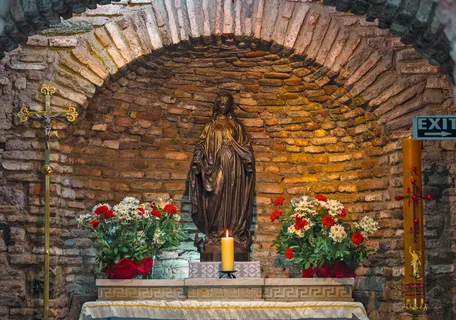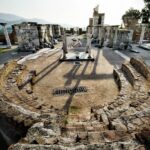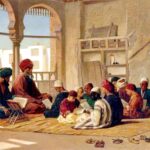VIRGIN MARY’S HOUSE
The House of Virgin Mary, the holy mother of Christians is located at Bülbül Mound.
The place which is also named ‘Panaya Kapulu’ by Christians is believed to have been built around the fourth century BC and was unearthed by the excavations carried on in 1891.
For many years, religious ceremonies take place at Panaya Kapulu at where the House of Virgin Mary is located yearly on the 15th of August. In 1957, Pope has confirmed the House as a pilgrimage site.
Shortly before his crucifixion, Jesus had escrowed his mother to his friend and disciple, St. John. Deciding that remaining in Jerusalem was dangerous for his mother Virgin Mary.
St. John saved her to Bülbül Mound. Holy Virgin lived here until her death. Following the general acceptance of Christianity, a church was built at Bülbül Mound in the shape of a cross.
St. John continued to live in Ephesus, and according to the belief, he wrote the Bible here until his death.
EPHESUS
The ancient city of Ephesus was an ancient Greek city and the capital of Anatolian Province. It was one of twelve Ionian cities.
During the Roman era, Ephesus had a population of more than 250,000 in first century BC. The ancient city of Ephesus is the third largest excavated ancient city in the world.
The ancient city of Ephesus welcomes you to discover the Library of Celsius, Temple of Hadrian, Triumphal Gate of Mazeus and Mithridates, House Pleasure, Slope Houses of the second century AD, and colossal Theater. You are going to have the privilege to live Roman Ephesus daily life with your official guide.
The ancient city of Ephesus was also important the Virgin Mary Church is located here, and it is the church where the 3rd Ecumenical Council was held.
SIRINCE
It is an old Greek-Turkish village situated on the hillside, covered with vineyards and peach gardens. The historical texture of the village has been preserved very well.
The natural atmosphere of the village offers its visitors to experience of meeting hospitable villagers, tasting homemade fruit wine, goat cheese, and olive oil. It also gives the chance for shopping lacework handily made by the villagers.
Since the village once belonged to the Greeks, it is also possible to visit the Orthodox churches (one of them is called St. John the Baptist) with well-preserved frescoes on the walls.




